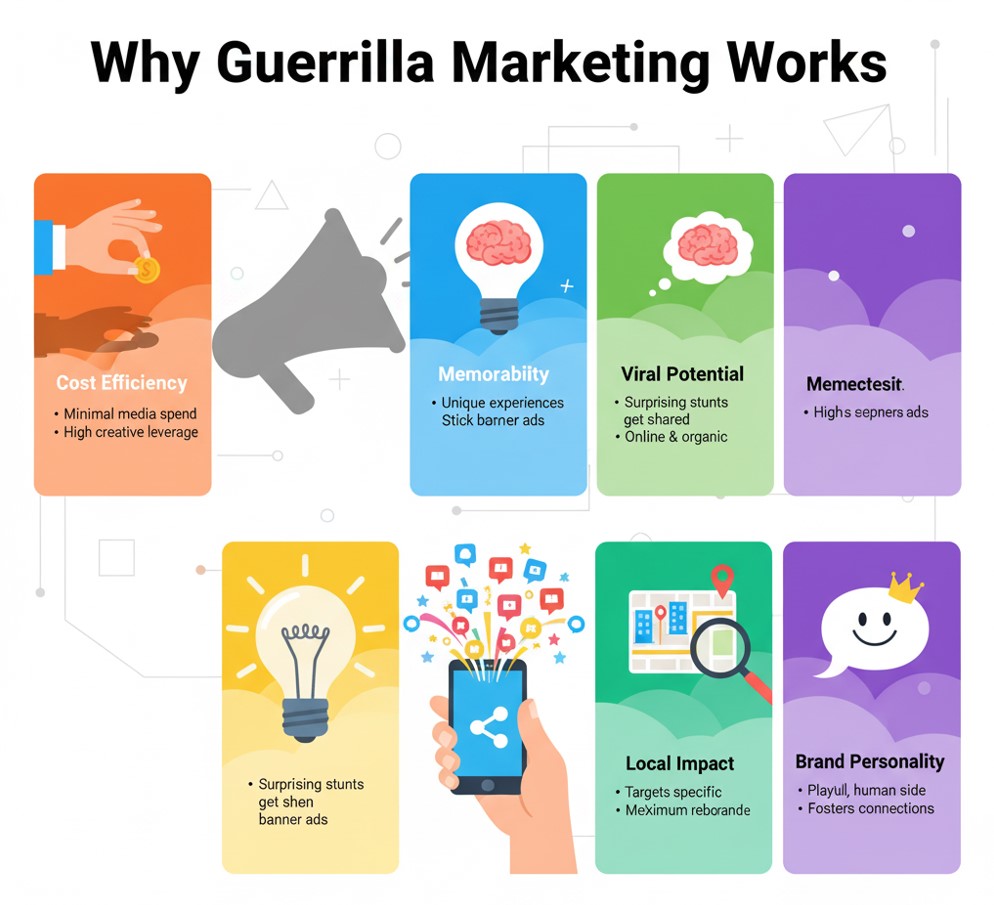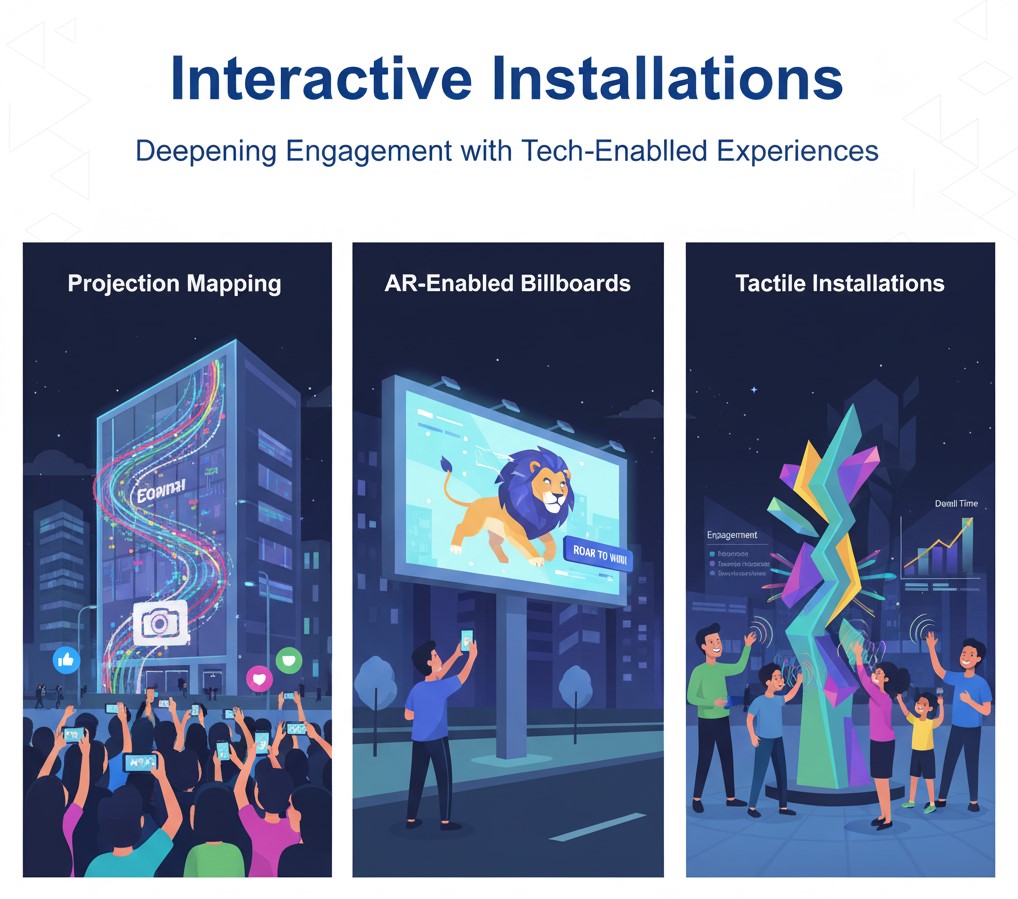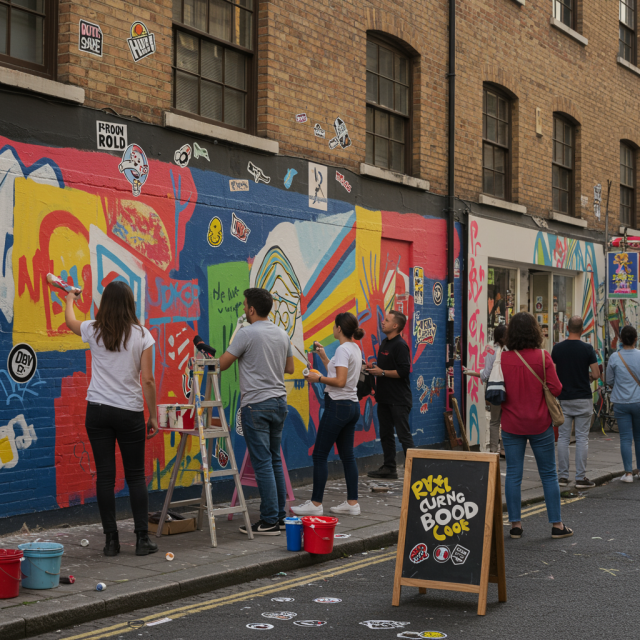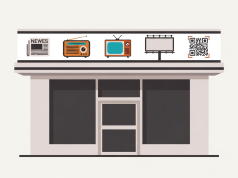In an era dominated by digital ads and social media campaigns, guerrilla marketing offers a breath of fresh air for brands looking to stand out without breaking the bank. By leveraging creativity, surprise, and unconventional placements, guerrilla tactics can create memorable experiences that spark conversations and build genuine connections. This guide will walk you through proven guerrilla marketing strategies, show you how to plan an impactful campaign, and explain how to measure its success—all on a shoestring budget.
What Is Guerrilla Marketing?
Coined by Jay Conrad Levinson in the 1980s, guerrilla marketing refers to low-cost, creative tactics designed to grab attention in unexpected places. Unlike traditional advertising, which relies on paid media placements, guerrilla marketing uses ambient environments—streets, public spaces, events—to deliver a message where consumers least expect it. The goal is to surprise, delight, and engage, creating a viral ripple effect that amplifies reach through word-of-mouth and social sharing.
Why Guerrilla Marketing Works
While guerrilla tactics may seem unconventional, they often complement a broader traditional advertising strategy by creating buzz that amplifies media coverage, builds local awareness, and drives traffic to mainstream channels like TV, print, and digital ads

- Cost Efficiency: Minimal media spend, high creative leverage.
- Memorability: Unique experiences stick in the mind longer than banner ads.
- Viral Potential: Surprising stunts get shared organically online.
- Local Impact: Targets specific neighborhoods or events for maximum relevance.
- Brand Personality: Shows a playful, human side of your business.
Top Guerrilla Marketing Tactics
1. Street Art and Murals
Commissioning or creating street art can turn a drab wall into a bold brand statement. Murals with hidden QR codes or interactive elements encourage passersby to snap photos, post on social channels, and tag your brand. Choose high-foot-traffic areas near cafés, transit stops, or business districts to maximize impressions.
2. Ambient Advertising
Ambient ads integrate seamlessly into the environment—bench ads that double as mini shelter, building wraps that mimic product packaging, or elevator doors that transform into a branded canvas. By embedding your message where people least expect it, you capture attention in moments of downtime without the clutter of traditional ads.
3. Flash Mobs
Organize a surprise performance in a public space to draw crowds and media attention. Flash mobs can be dance routines, dramatic readings, or interactive theater that ties back to your product or service. Record the event and share it online to extend reach beyond the physical audience.
4. Sticker Bombing
Design eye-catching stickers with witty slogans or intriguing visuals, and place them on lampposts, mailboxes, and community boards. Encourage fans to find and share them using a branded hashtag. Keep the design simple and high-contrast so it stands out even from a distance.
5. Pop-Up Events
Temporary installations—like a pop-up café, mini art gallery, or product demo station—create urgency and exclusivity. These short-term activations invite direct interaction, allow you to collect customer data, and can be staged in parks, plazas, or inside busy retail centers for instant buzz.
6. Interactive Installations

Use technology to your advantage: projection mapping on building facades, AR-enabled billboards, or tactile installations that respond to touch or motion. Interactive elements deepen engagement and encourage onlookers to stay longer, boosting the chance they’ll become brand advocates.
7. PR Stunts
A well-executed public relations stunt can earn free media coverage. Think of record attempts, surprise celebrity partnerships, or an unexpected product giveaway that ties back to your brand story. Always align the stunt with your core message to avoid confusion or backlash.
8. Street Teams and Grassroots Outreach
Deploy ambassadors to hand out samples, flyers, or small gifts at strategic locations—concerts, festivals, sporting events, or commuter hubs. Equip them with talking points and social media prompts to spark conversations and drive online shares.
Planning Your Guerrilla Campaign
Successful guerrilla marketing hinges on thorough planning. Start by defining clear objectives: brand awareness, foot traffic, or social engagement. Identify your target audience’s hangouts—cafés, parks, festivals—and secure any necessary permits. Sketch mockups, select materials that withstand weather, and test one location before scaling up. Finally, create a content plan to capture and distribute photos or videos across your owned channels.
Measuring Success
Although guerrilla tactics are offline by nature, you can still quantify results. Track social media mentions and hashtag usage before, during, and after the activation. Use unique URLs or QR codes to gauge scanning rates. Survey participants via follow-up emails, and monitor foot traffic in targeted areas if possible. Combine quantitative data with qualitative feedback to assess impact and refine future campaigns.
Legal and Ethical Considerations
Not all guerrilla ideas are legal—or welcomed by local authorities. Always research city regulations regarding street art, public gatherings, and signage. Obtain location permits and respect private property rights. Avoid tactics that may be interpreted as vandalism or harassment. Ethical actions not only protect your brand’s reputation but also foster goodwill within the community.
Conclusion
Guerrilla marketing offers a budget-friendly path to creating memorable, shareable brand experiences that cut through the noise of conventional advertising. By choosing the right tactics, planning meticulously, and measuring your outcomes, you can harness the power of surprise and creativity to amplify your message. Embrace the unexpected, stay authentic, and watch your small budget deliver big results.
Learn more about: How to Use Traditional Media to Promote a New Product Launch









